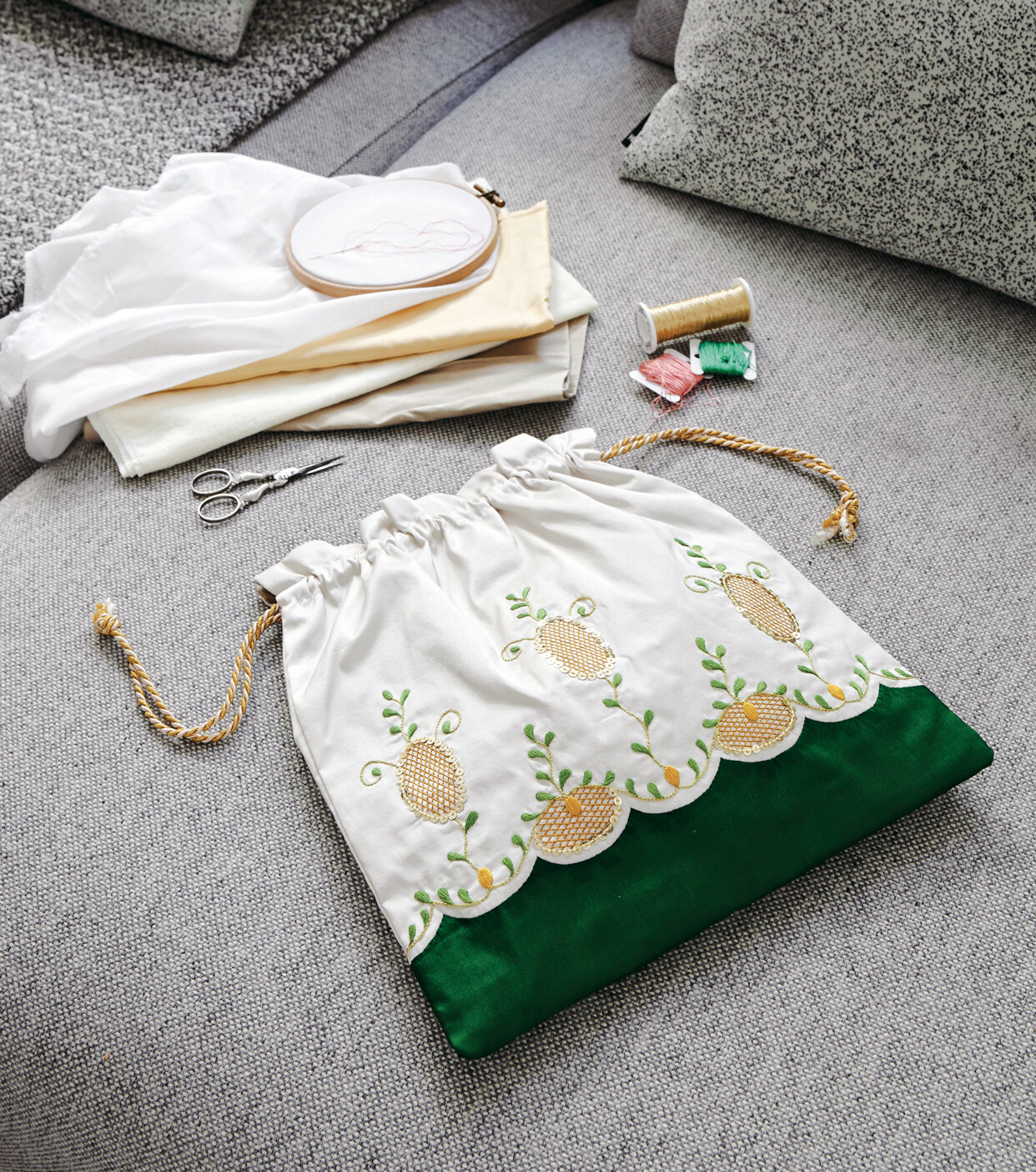We are grateful to Prof Jennie Batchelor, author of Jane Austen Embroidery, for this guest post.
It is a truth infrequently acknowledged that Jane Austen was as skilful with a needle as a pen. She regularly executed plain work, including the making of household linen and undergarments, and was an accomplished embroiderer. At least three examples of her needlework survive in the form of a co-created medallion quilt, a monogrammed handkerchief and a needle case. Family legend has it that a beautiful muslin shawl, now in Jane Austen’s House Museum, is the writer’s handiwork, too. If so, then Jane more than deserves her nephew, James Edward Austen-Leigh’s, compliment that her stitching ‘might have put a sewing machine to shame’.
A woman’s needlework skill often features as a barometer of character in Austen’s novels. Lady Bertram’s redundancy is self-evident when we read that she spends her ‘days in sitting nicely dressed on a sofa, doing some long piece of needlework, of little use and no beauty’. Lady Catherine de Bourgh’s misplaced sense of exemplarity is similarly exposed when she instructs the more skilled Elizabeth Bennet and Charlotte Collins to do their work ‘differently’. Unlike Lady Catherine, Austen could distinguish good needlework from bad. Her letters contain numerous instances of Georgian upcycling as she fashioned new trimmings for accessories, many of which she made herself. She was flattered when friends wanted a pattern for caps that she and her sister had made in the spring of 1799. Flattery turned to irritation when Jane realised that Cassandra Austen had given the pattern away and their style could be mimicked.
But where did they get the patterns from? A likely source is the Lady’s Magazine (1770–1832), a hugely successful periodical that Austen read and that for 50 years provided embroidery patterns for embellishing garments, accessories and household objects. Sadly, few of the patterns survive because they were designed to be used and in ways that would not necessarily survive usage. After fifteen years researching the magazine, I had pretty much given up on locating many of the patterns. Then one day I managed to acquire a volume with six intact. Newly energised, I resumed my hunt and my collection today is well into double figures.
I tried making some of the patterns myself, but faced several challenges, not least the fact that I hadn’t done much sewing since my teenage years. A bigger problem was that the magazine offered no instruction. It could simply trust that Georgian women had the skills – taught from childhood and sometimes before they could write – to interpret the patterns. Most modern users – me included – needed more guidance.
Determined to bring the designs back to life, I teamed up with historic embroidery expert, Alison Larkin, for Jane Austen Embroidery. The book introduces readers to embroidery in Jane Austen’s Britain and novels and has illustrated essays on Georgian dress, fashion and crafts. The practical section includes 15 embroidery projects using patterns from the Lady’s Magazine. Graded from novice to expert, and with clear instructions, the projects reinterpret the patterns for modern homes.
Jennie Batchelor is Professor of Eighteenth-Century Studies at the University of Kent and the author of five books and many articles and book chapters. Jennie has co-hosted embroidery workshops and given various talks about embroidery, Jane Austen and Regency fashion for many events, including Lucy Worsley’s BBC documentary Jane Austen: Behind Closed Doors. She is Patron of the Kent branch of the Jane Austen Society.
Jenny will be joining us for an evening during our Hand Sewing and Quilting Retreat at Goodnestone Park, previously the home of Jane Austen’s brother Edward. To find out more about the retreat, please click on the button below.


